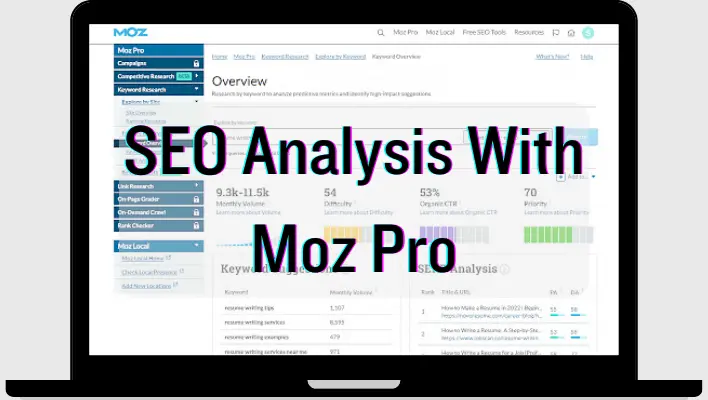The Ultimate Guide to Using Pagespeed Insights Checker for Website Speed Optimization
Pagespeed Insights is an essential tool for anyone looking to improve website performance, enhance user experience, and bolster search engine optimization (SEO) efforts. By providing detailed analysis and offering actionable recommendations, Pagespeed Insights helps you understand how well your website is performing across key metrics. Whether you’re seeking to improve your desktop PageSpeed score or enhance mobile PageSpeed, this tool can be pivotal in your overall optimization strategy, ultimately driving higher rankings and user engagement.
Contents
Understanding Pagespeed Insights and Its Importance
Pagespeed Insights is a tool developed by Google that evaluates your website’s speed and performance. The tool generates a detailed report on both mobile and desktop performance, providing scores based on Core Web Vitals and other crucial factors that affect site performance. These scores are critical because Core Web Vitals have become important ranking factors for Google, making it imperative for website owners to pay attention to these metrics for SEO purposes.
The tool is designed to help users pinpoint areas for improvement, such as image optimization, server response time, and resource minification. By focusing on these key aspects, you can increase website speed, which directly impacts user retention and your position in search results.
How to Use Pagespeed Insights to Analyze Your Website
Using Pagespeed Insights is straightforward. Follow these steps to assess your website’s performance:
- Enter your website URL: Go to the Pagespeed Insights Checker Page and input the URL you want to evaluate.
- Review the Performance Score: The tool provides a performance score ranging from 0 to 100. Higher scores indicate better website performance.
- Analyze the Report: After the tool generates your report, it will highlight areas for improvement. For instance, it might recommend optimizing images or reducing JavaScript execution times.
- Implement Suggested Fixes: The tool will provide actionable recommendations for each identified issue, such as compressing images, leveraging browser caching, or minifying CSS and JavaScript files.
Key Metrics Measured by Pagespeed Insights
Pagespeed Insights evaluates several important performance metrics, including Core Web Vitals, which are essential for SEO rankings:
| Metric | Description | Ideal Range |
|---|---|---|
| Largest Contentful Paint (LCP) | Measures how quickly the largest visible element loads. | Under 2.5 seconds |
| First Input Delay (FID) | Measures the delay between the first user interaction and the browser’s response. | Under 100 milliseconds |
| Cumulative Layout Shift (CLS) | Measures how stable the page layout is as it loads. | Below 0.1 |
Improving these metrics will significantly enhance user experience and contribute to your website’s SEO performance.
Effective Strategies to Improve Your PageSpeed Score
To enhance your PageSpeed score, there are several effective strategies to adopt:
- Optimize Image Sizes: Uncompressed images are a leading cause of slow load times. Use image compression tools to reduce file size without sacrificing quality.
- Enable Compression: Enable Gzip or Brotli compression for text-based assets like HTML, CSS, and JavaScript. Compressing these resources reduces their size, speeding up page loading.
- Minify CSS, JavaScript, and HTML: Remove unnecessary spaces, comments, and characters from your code. This reduces file sizes and improves loading times.
- Leverage Browser Caching: Configure your server to cache static files like images and scripts. This reduces load times for repeat visitors by preventing the browser from downloading these files again.
- Use a Content Delivery Network (CDN): A CDN distributes your website’s content across multiple servers, improving load speeds for visitors across different geographic locations.
By optimizing these factors, you can achieve a significant improvement in your website speed, resulting in enhanced performance and better user satisfaction.
Exploring Alternatives to Pagespeed Insights
While Pagespeed Insights is a powerful tool, it is beneficial to explore other tools for a comprehensive performance audit. Here are a few highly regarded alternatives:
- GTmetrix: GTmetrix provides a detailed performance report, along with actionable insights for improving speed. It includes both a PageSpeed score and a YSlow score to measure site performance.
- Pingdom: Known for its user-friendly interface, Pingdom offers a performance summary, page size details, and suggestions for improvement.
- Lighthouse: Lighthouse is an open-source tool from Google that audits your site for performance, accessibility, and SEO. It provides in-depth reports with detailed metrics and optimization suggestions.
| Tool | Key Features | Benefits |
|---|---|---|
| GTmetrix | Detailed insights, historical tracking | In-depth performance data |
| Pingdom | Easy-to-read reports, uptime monitoring | User-friendly, reliable results |
| Lighthouse | Audits for performance, accessibility, SEO | Open-source, integrates with Chrome |
Advanced Optimization Techniques for Pagespeed Insights
To take your site’s performance to the next level, consider implementing these advanced optimization techniques:
- Server-Side Optimization: If your website is hosted on a shared server, upgrading to a dedicated or virtual private server (VPS) can significantly improve response times.
- Enable HTTP/2: HTTP/2 allows for more efficient use of connections, reducing the time it takes to load a page by allowing multiple requests over a single connection.
- Lazy Load Resources: Lazy loading ensures that images and other resources are only loaded when they enter the user’s viewport, reducing initial load time.
By implementing these advanced strategies, you can optimize your website even further, improving both speed and user experience.
Mobile Optimization and Its Role in PageSpeed
In today’s mobile-first world, optimizing your site for mobile devices is crucial. Google now uses mobile-first indexing, meaning it predominantly uses the mobile version of a website’s content for ranking and indexing. Optimizing mobile PageSpeed is a critical part of this process.
- Responsive Design: Ensure that your site is mobile-friendly by using responsive design, which automatically adjusts the layout to fit any screen size.
- Mobile-Specific Performance: Mobile devices often have slower internet connections than desktops. Reduce the number of large images and scripts that need to be loaded, and ensure that your mobile site is as lightweight as possible.
Seasonal SEO and Pagespeed Insights
During high-traffic periods, such as Black Friday or holiday sales, Pagespeed Insights becomes even more valuable. Optimizing your site ahead of these peak times ensures that it can handle traffic spikes while maintaining high performance.
By proactively improving website speed, you not only enhance user experience but also ensure that your website remains competitive in the search rankings during critical periods.
Conclusion
Pagespeed Insights is an invaluable tool for anyone serious about optimizing website performance and SEO. By leveraging its insights and implementing the recommended improvements, you can enhance user experience, improve Core Web Vitals, and secure better rankings in search results. Regular testing and optimization, combined with advanced strategies and the use of Pagespeed Insights alternatives like GTmetrix and Pingdom, will help ensure that your site performs at its best across both desktop and mobile platforms.
In today’s digital landscape, a fast website is not just a luxury – it’s a necessity. Start using Pagespeed Insights today and begin your journey toward a faster, more efficient website.
FAQS
What is Pagespeed Insights and How Does It Improve SEO?
Pagespeed Insights is a tool by Google that analyzes your website’s speed and performance. By optimizing Core Web Vitals and addressing performance issues like image compression and JavaScript minification, you can enhance both user experience and SEO rankings.
How to Improve PageSpeed Score Using Google’s Tool?
To improve your PageSpeed score, focus on optimizing images, enabling compression, and minifying CSS and JavaScript. Use Pagespeed Insights regularly for continuous performance improvements.



















